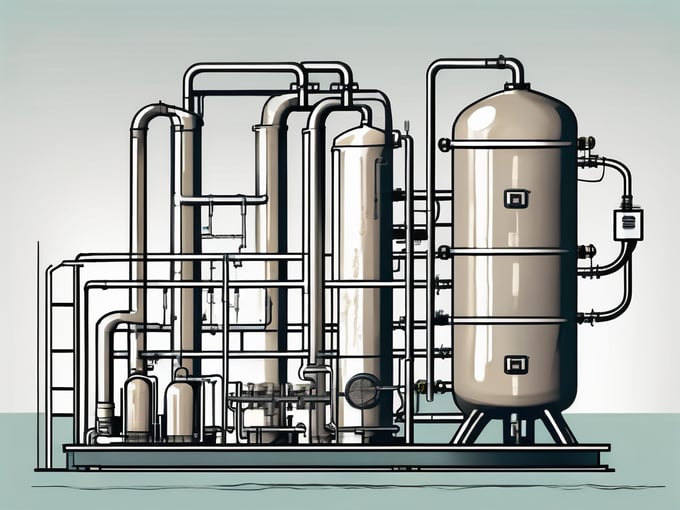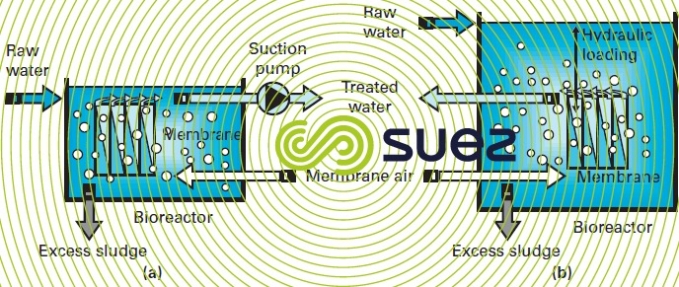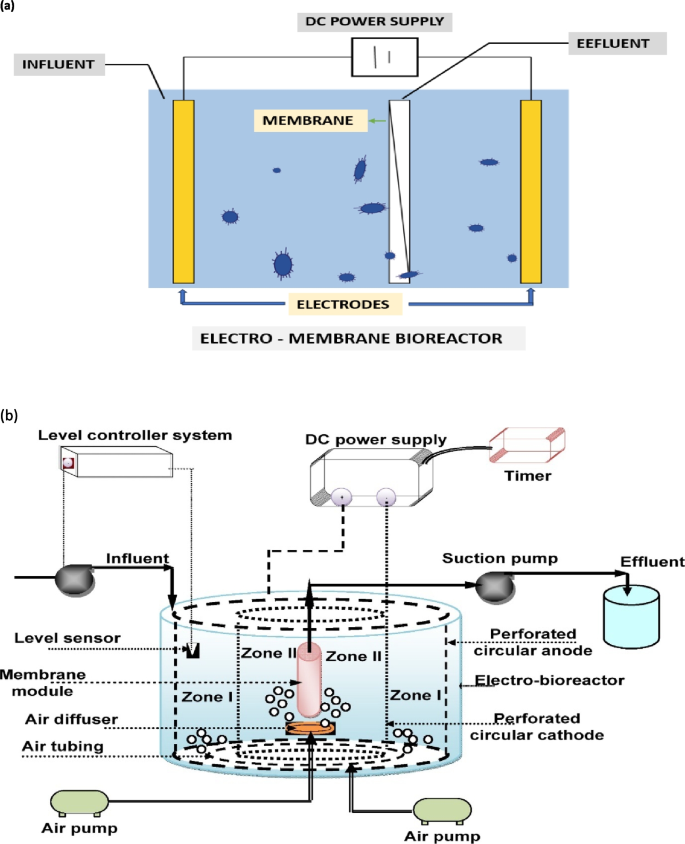Exactly How Membrane Layer Bioreactors Are Reinventing Water Filtration Solutions
The emergence of membrane bioreactors (MBRs) represents a considerable advancement in the area of water filtration, merging organic treatment procedures with innovative membrane purification innovations. As worldwide water deficiency escalates, the role of MBRs in facilitating potable water reuse and sustainable water management ends up being significantly critical.
Overview of Membrane Layer Bioreactors
Membrane bioreactors (MBRs) stand for a substantial development in water filtration modern technology, as they incorporate biological therapy processes with membrane filtration. This assimilation boosts the effectiveness of wastewater treatment by utilizing microbes to deteriorate organic toxins while all at once using semi-permeable membranes to different cured water from put on hold solids and microorganisms.
The MBR system generally includes a biological activator where the microbial populace metabolizes impurities, adhered to by a membrane purification system that retains biomass and permits just tidy water to pass through. This double functionality leads to higher effluent quality compared to standard treatment approaches. MBRs can be run in both batch and constant circulation modes, using versatility in layout and application.
Additionally, MBRs are defined by their compact impact, making them ideal for metropolitan setups with area restrictions. Membrane Bioreactor. They additionally enable the recovery of water for reuse, hence adding to water sustainability efforts. While MBR modern technology has actually gotten appeal in industrial and local applications, its operational intricacies and energy demands require mindful factor to consider during execution. Overall, MBRs are at the center of boosting water treatment performance and high quality, showcasing the possibility for ingenious options in environmental administration.
Advantages of MBR Innovation
The assimilation of biological treatment with membrane filtering supplies numerous advantages for water purification procedures. One of the primary advantages of Membrane Bioreactor (MBR) modern technology is its ability to successfully get rid of both not natural and natural contaminants, causing top quality effluent. The membranes function as a physical barrier, protecting against suspended solids and pathogens from passing through, which boosts the total safety and security and dependability of cured water.
Furthermore, MBR systems call for a smaller sized footprint compared to traditional therapy methods, permitting more effective room application. This small layout is especially useful in urban settings where land is restricted. MBRs also demonstrate operational versatility, fitting varying influent qualities and circulation rates without substantial performance deterioration.
In addition, the procedure provides enhanced nutrient elimination capabilities, particularly for nitrogen and phosphorus, which are crucial for preventing eutrophication in getting waters. The decreased sludge production connected with MBR innovation also equates to lower disposal expenses, making it an economical service in the future - Membrane Bioreactor. Overall, the advantages of MBR innovation placement it as a leading choice for lasting and cutting-edge water filtration systems, addressing both environmental and financial concerns
Applications in Water Purification
Applications of Membrane Bioreactor (MBR) modern technology in water filtration are diverse and impactful, attending to various treatment requires across numerous industries. MBRs efficiently integrate organic therapy procedures with membrane purification, making them excellent for community wastewater treatment, commercial effluent monitoring, and also potable water reuse campaigns.
In metropolitan setups, MBRs are significantly employed to improve the quality of dealt with wastewater, enabling for compliance with rigid discharge regulations and helping with the recycling of water for watering and non-potable uses. Their small style also makes them ideal for urban page environments where room is restricted.
Industrially, MBR innovation is used to deal with procedure water and wastewater, particularly in markets such as food and beverage, pharmaceuticals, and fabrics. By effectively removing contaminants and suspended solids, MBRs assist sectors lessen ecological impacts while recuperating important sources from wastewater streams.
Additionally, MBRs are getting grip in decentralized water treatment applications, where small-scale systems can be released in remote locations or developing regions. This adaptability enables communities to accomplish lasting water management remedies, boosting access to tidy water while minimizing dependence on conventional treatment techniques.
Situation Studies and Success Stories

In an additional instance, a fabric production center in Bangladesh adopted MBR innovation to resolve its wastewater challenges. The system reduced chemical oxygen need (COD) degrees from 1,200 mg/L to less than 100 mg/L, therefore fulfilling regulative criteria and considerably reducing environmental impact.
The University of Cape Town's MBR installation has proven effective in treating greywater for non-potable reuse on university. This job not only saves potable water but also works as an educational design for lasting techniques.
Moreover, a seafood handling plant in Norway utilized MBR technology to deal with effluents consisting of high degrees of raw material, accomplishing over 90% contaminant elimination. These instance studies underscore MBR modern technology's versatility and its vital duty in boosting water high quality across varied applications.
Future of Water Therapy Solutions
As international water scarcity and contamination challenges escalate, ingenious water treatment services are becoming progressively vital to ensure lasting accessibility to clean water. The future of see post water therapy exists in the combination of sophisticated technologies that improve the effectiveness and efficiency of filtration processes. Membrane layer bioreactors (MBRs) go to the leading edge of this advancement, incorporating organic therapy with membrane layer filtering to produce top notch effluent suitable for various applications.

Emerging patterns such as resource healing from wastewater, including nutrients and power, will certainly better change therapy centers into environmentally friendly centers. In addition, advancements in nanotechnology and membrane layer products guarantee boosted efficiency and longevity of filtering systems.

Conclusion
Their function in potable water reuse and lasting water monitoring highlights their significance in addressing worldwide water shortage challenges. Continued research study and growth will better improve the efficacy and fostering of MBR innovation, making sure a durable future for water treatment solutions.
The Going Here development of membrane bioreactors (MBRs) stands for a significant improvement in the area of water filtration, merging biological treatment procedures with sophisticated membrane filtering technologies. As worldwide water scarcity increases, the function of MBRs in facilitating safe and clean water reuse and sustainable water administration becomes progressively essential. They likewise allow the healing of water for reuse, hence contributing to water sustainability efforts.As global water shortage and air pollution difficulties intensify, innovative water therapy solutions are becoming significantly essential to ensure lasting access to clean water. Their role in safe and clean water reuse and lasting water administration highlights their value in attending to international water shortage challenges.